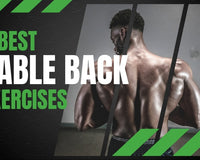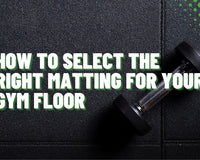You finish your last rep of heavy squats, rack the bar, and your workout partner asks, “How hard was that set?” You pause, shrug, and say, “Pretty tough, I guess.”
It’s not exactly helpful, especially if you're trying to track progress. That’s where RPE, or Rate of Perceived Exertion, can be useful.
RPE helps translate that “kind of tough” feeling into something useful. It’s been around for decades, but lifters and athletes still use it because it works. In this article, we’ll explain what RPE actually means, why it matters, and how to use it to make your workouts smarter.
What Is RPE, Really?

RPE stands for Rate of Perceived Exertion which measures how strenous an exercise feels on a 10 point scale. 1 means the activity feels effortless, like stretching or walking an 10 means you’re at your absolute limit.
RPE was originally developed by Swedish scientist Gunnar Borg in the 1960s.
His version ran on a strange scale from 6 to 20, which left many people scratching their heads. Thankfully, most athletes today use a simplified version that runs from 1 to 10.
For example, an RPE of 8 means you had two solid reps left in the tank. An RPE of 9 means you could have done one more. And 10 means total failure.
Related Post: How Long Will a Gym Pump Last?
Why You Should Care About RPE
RPE matters because it allows you to adjust your training to how you actually feel, not how you planned to feel.
Let’s say your program tells you to squat 80% of your one-rep max for five reps. That might be fine on a good day. But what if you slept poorly, skipped lunch, or your legs are still sore from your last session?
Instead of grinding through a heavy set and risking injury or burnout, RPE helps you choose a weight that matches your actual energy level.
If that same squat feels like an RPE 9 today when it usually feels like a 7, you can back off a little and stay on track without overdoing it.
How to Use RPE Without Overthinking It

Getting started with RPE is easier than you might think. Begin by doing your workout as usual, but after each working set, pause and ask yourself: “How many more clean reps could I have done?” Be honest. If the answer is two, that’s an RPE 8. If you’re confident you had one more in you, call it a 9.
Over time, you’ll start to see patterns and learn how different weights feel at different effort levels.
RPE vs. RIR: What’s the Difference?
You might have heard of something called RIR or Reps In Reserve. Instead of rating how hard something felt, RIR asks you how many reps you had left before hitting failure. So, if you had two reps left, that’s 2 RIR, which is the same as an RPE 8.
Some lifters prefer RIR because it’s a little more intuitive. Others like RPE because it fits into a broader scale. They’re both useful. What matters most is that you pick one and stay consistent so your data stays meaningful.
Related Post: How Often Should You Go To The Gym?
Common Mistakes (and How to Avoid Them)

One of the biggest mistakes people make with RPE is guessing randomly. Especially if you’re new to lifting, you might think a set was a 9 when it was really a 6. Don’t worry because this is normal. It takes practice.
Another common issue is underestimating how hard you’re working. Some people want to sound tough and claim a heavy set was only an RPE 6, but if the bar was crawling and you were shaking under the weight, that’s probably closer to a 9 or 10. It’s not a contest. Be honest with yourself so you can adjust your training intelligently.
Also, try not to hit RPE 10 too often. All-out failure might look impressive on social media, but constantly maxing out can lead to burnout, injuries, or stalling progress.
Save those high-effort sets for testing days, competitions, or the final week of a training block. Most of your work should stay in the 6–9 range.
How to Build RPE Into Your Training Program
Start by choosing RPE targets for your main lifts. If you’re working on strength, aim for sets in the RPE 7 to 9 range. If you’re focusing on muscle growth, you’ll usually hang out around 6 to 8.
Let’s say Monday is squat day. You might do three sets of five at RPE 8.
That means you choose a weight that leaves you with two reps in the tank on each set.
You can do the same for bench press, deadlifts, overhead press, and even accessory work. With a little practice, you’ll be able to program smarter workouts that match your energy levels and recovery status without needing to change the whole plan.
Related Post: What is a PR in the Gym?
Final Thoughts: Train Smarter, Not Just Harder

Instead of blindly following percentages or chasing PRs, you’ll start to understand how your body feels on different days and how much effort you’re really putting in.
When you use RPE consistently, you can avoid overtraining, prevent injury, and still make gains, all while staying flexible.
Next time someone asks how hard your set was, you won’t just say “pretty tough.” You’ll smile, nod, and say, “That was a solid RPE 8 — two more reps in the tank.” And that’s how you train like a pro.





